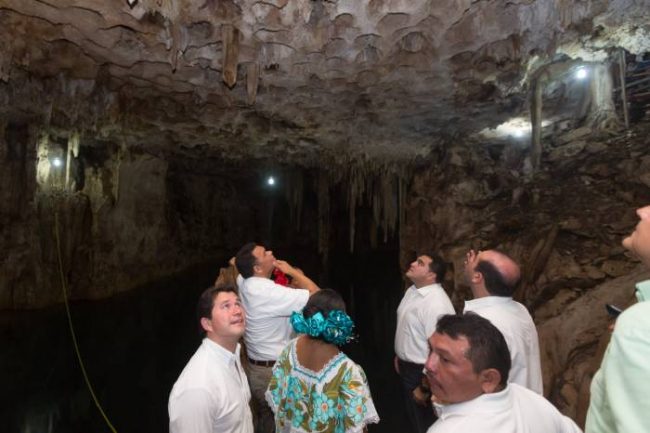In order to integrate a circuit of cenotes and caves to the infrastructure of “the industry without smokestacks” in Yucatan, seven visitor centers were recently launched through the Program for Improvement of Production and Indigenous Productivity (Proin) in its Nature Tourism department.
In working tour through Sanahcat, Governor Rolando Zapata Bello opened a project of this kind in Belechen cenote, which along with enabling another six projects, benefits a total of 93 thousand people in Yaxcaba, Homun, Hocaba, Dzitas, Cuzama and the hosting demarcation, where 8.7 billion pesos were invested in conjunction with the National Commission for Development of Indigenous Peoples (CDI), reports the Government of Yucatan.
In the presence of federal, state and municipal authorities, the governor stressed that to get more people to visit and learn about Yucatan’s natural attractions, all must have basic care services and consolidate a strategy of specific promotion, so he instructed the Ministries of Social Development (Secretaría del Desarrollo Social SEDESOL) and Tourism Development (de Fomento Turístico SEFOTUR) to plan a circuit of these natural sites.
“This is a great treasure, a marvel. Our job as government is to support them to have all the necessary elements, such as this work, this infrastructure”, the governor said, referring to nature tourism as an area of opportunity and a productive activity that generates jobs and welfare for families, caregivers and conservation of such ecotouristic areas.
In their messages, directors of SEDESOL and the local delegation of CDI, Mauricio Sahuri Rivero and Jesus Vidal Peniche, respectively, agreed that these supports strengthen indigenous communities and boost the growth of the sector and the promotion of culture.
The Belenchen cenote stop offers bathroom, kitchen, food area and kids playground services. The six remaining ecotouristic projects are located in Xocempich, San José Eknakan, Yaxunah, Dzitox, Polaban and the county seat of Sanahcat.
During the tour, Zapata Bello walked around the Aquaculture Production Unit “Bubul ha” where he could verify the processes to which the white shrimp and tilapias are put through for their comercialization nationwide.
Located in the vicinity of the town of Sanahcat and Polaban in Homun, the farm was equipped with over 90 tanks of 16 meters in diameter and another 14 with 230 liters of capacity dedicated to the maternity ward.
Source: sipse.com




